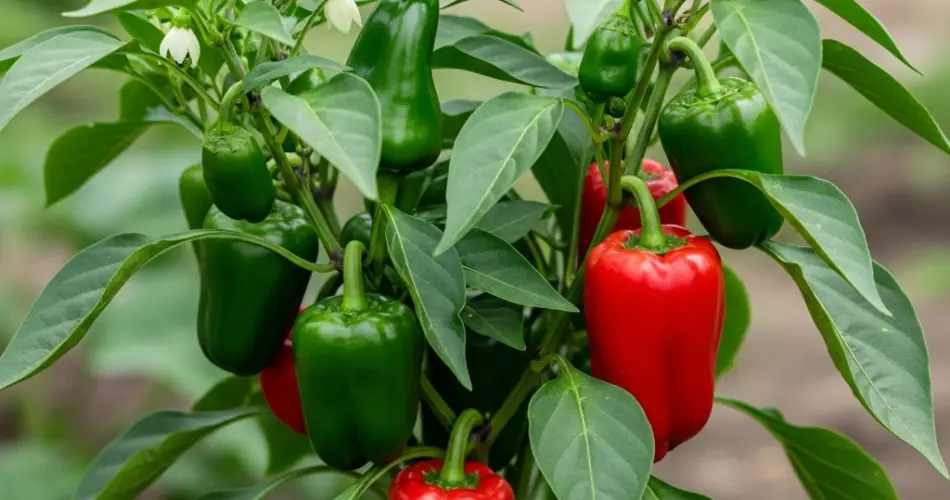Growing chili peppers from store-bought peppers is a simple and rewarding project for home gardeners. Whether you want to spice up your meals or enjoy the beauty of colorful pepper plants, you can start your own chili garden using seeds taken directly from peppers you’ve bought at the grocery store or farmer’s market. It’s easy, budget-friendly, and ideal for beginners or anyone looking to expand their gardening skills.
Here’s a complete guide on how to grow healthy chili plants from store-bought peppers—from seed collection to transplanting and care.
Step 1: Choose the Right Pepper
The first step is selecting the right type of pepper. Whether you prefer mild varieties like banana peppers or want the fiery heat of cayenne or habanero, most store-bought peppers can yield viable seeds. However, it’s best to:
-
Choose organic or heirloom peppers when possible. These are more likely to produce fertile seeds than hybrids, which often don’t grow true to type.
-
Avoid genetically modified (GMO) or chemically treated peppers, as their seeds may not germinate.
-
Select fully ripe peppers, usually those with deep red, yellow, or orange coloring depending on the variety.
Step 2: Harvest the Seeds
Once you have a ripe pepper:
-
Slice the pepper lengthwise to expose the seeds.
-
Scoop out the seeds gently and spread them on a paper towel.
-
Let the seeds dry in a cool, dry place for about 5–7 days. This reduces the risk of mold when planted.
Make sure the seeds are completely dry before storage or sowing.
Step 3: Start Seeds Indoors
To improve germination success, start seeds indoors where temperature and moisture are easier to control.
You’ll need:
-
Small pots or seed trays
-
Light potting mix or seed starting mix
-
Spray bottle for misting
Planting Steps:
-
Fill containers with moist, well-draining potting mix.
-
Plant each seed about 0.5 cm (¼ inch) deep.
-
Cover lightly with soil and mist the surface gently.
-
Cover with plastic wrap or place in a mini greenhouse to retain moisture.
-
Keep the containers in a warm place (ideally 24–28°C or 75–82°F). Chili seeds love heat.
Seeds typically germinate in 7–14 days. Remove plastic once the seedlings emerge.
Step 4: Provide Light and Warmth
Once the seedlings sprout, place them in a bright location or under grow lights. Chili plants need at least 12–14 hours of light per day to grow healthy and strong.
Keep the soil moist but not soggy. Use a spray bottle or water gently from below to avoid damaging delicate roots.
Step 5: Transplant Seedlings
After 4–6 weeks, or when seedlings develop 2–3 sets of true leaves, they’re ready for transplanting into larger pots or directly into the garden (weather permitting).
For outdoor transplanting:
-
Wait until all risk of frost is gone and nighttime temperatures stay above 15°C (60°F).
-
Harden off the seedlings by gradually exposing them to outdoor conditions over 5–7 days.
Soil Tips:
-
Use well-draining soil enriched with compost.
-
Choose a sunny location—chili plants thrive in full sun.
-
Space plants about 30–45 cm (12–18 inches) apart.
Step 6: Care and Maintenance
Watering:
Chili plants need regular watering, especially during flowering and fruiting. Keep soil evenly moist, but avoid overwatering.
Feeding:
Feed with a balanced fertilizer every 2–3 weeks, or use compost tea for a natural boost.
Pruning:
Pinch off early flowers if plants are still small to encourage stronger growth.
Staking:
Taller varieties may need support as fruits develop.
Step 7: Harvesting
Chili peppers can be harvested once they reach their mature color and size. Use scissors or garden shears to avoid damaging the plant. Regular harvesting encourages more fruit production.
You can eat the peppers fresh, dry them for storage, or even save seeds again for next season.
Final Tips
-
Growing from store-bought peppers is not only possible but a great way to start a pepper garden without buying seed packets.
-
While hybrids may produce unpredictable results, the joy of experimenting with various varieties makes it worthwhile.
-
Don’t discard extra seedlings—gift them to friends or grow a mini pepper jungle at home!
With a little patience and care, those seeds inside your everyday grocery-store pepper can transform into thriving, fruit-bearing plants. Start small, enjoy the process, and soon you’ll be harvesting your own chilies right from home.



